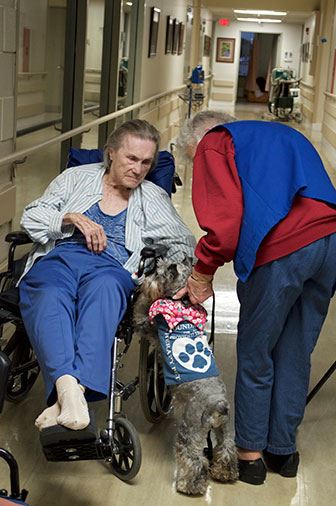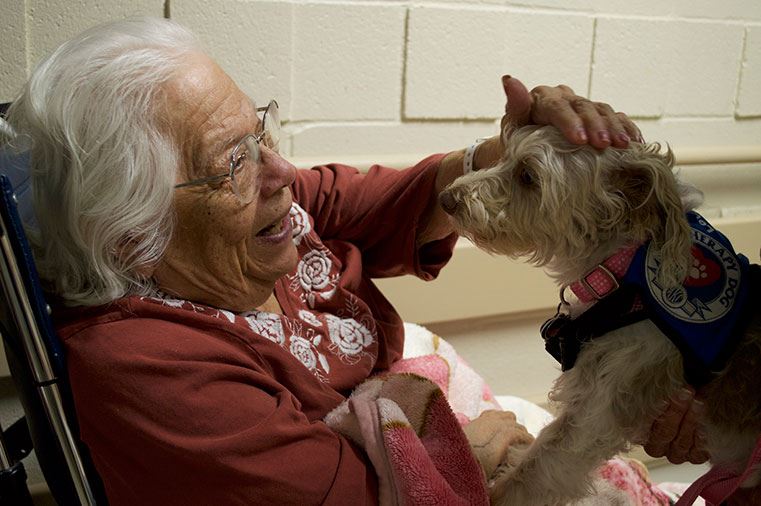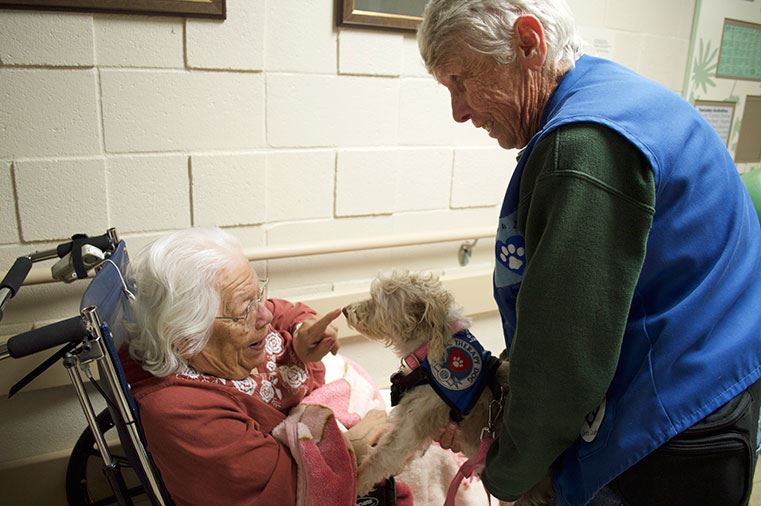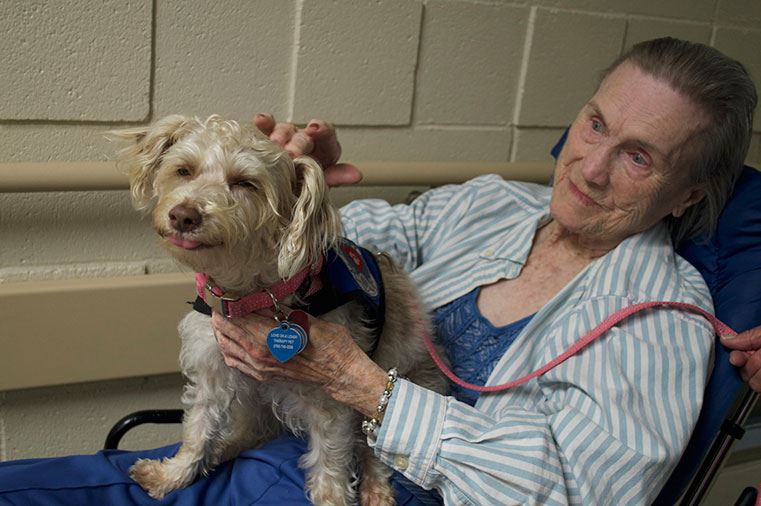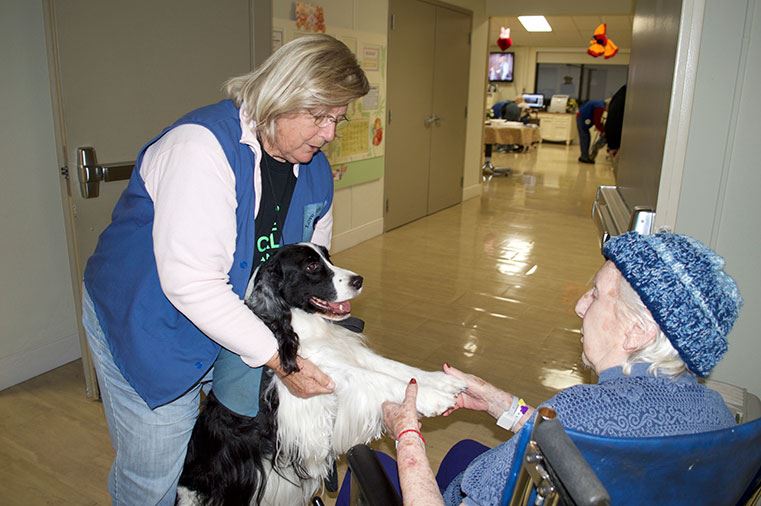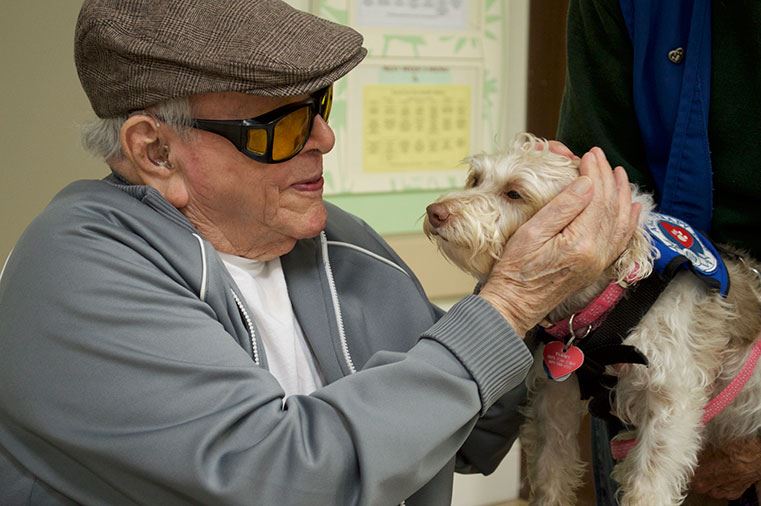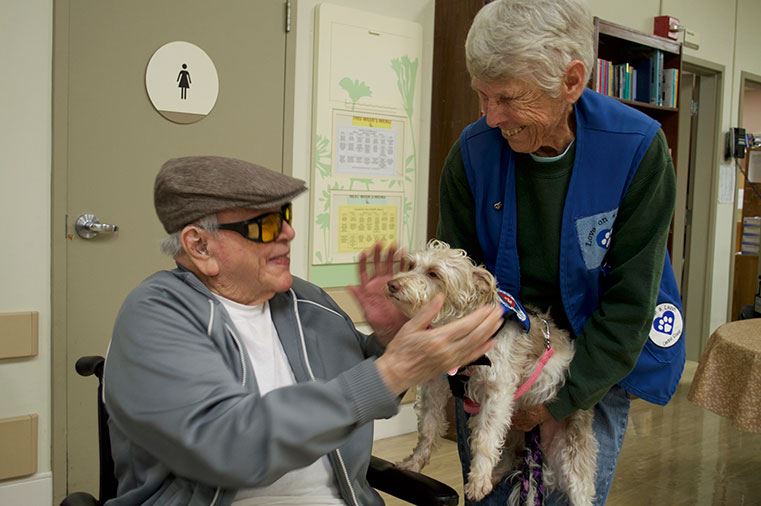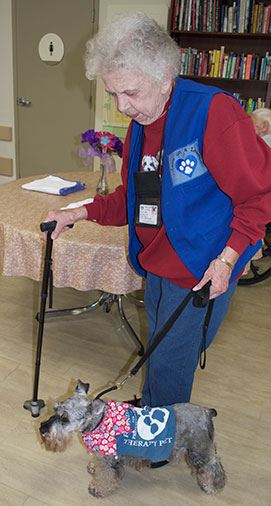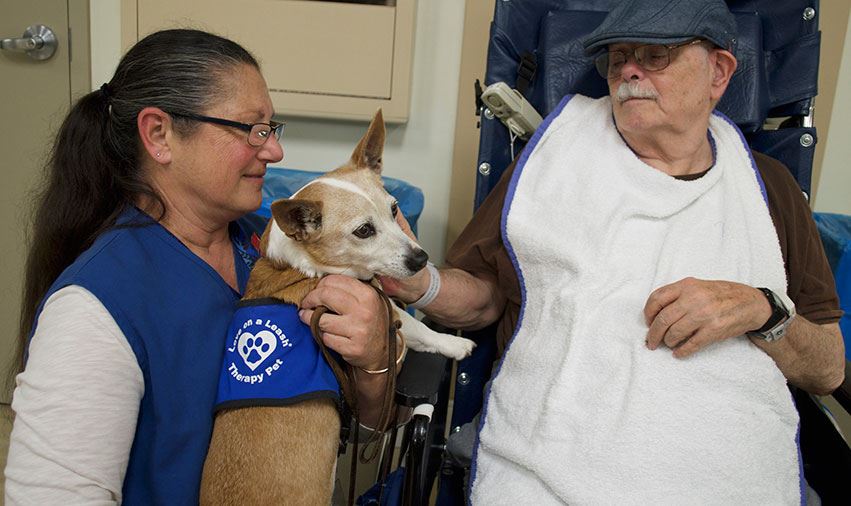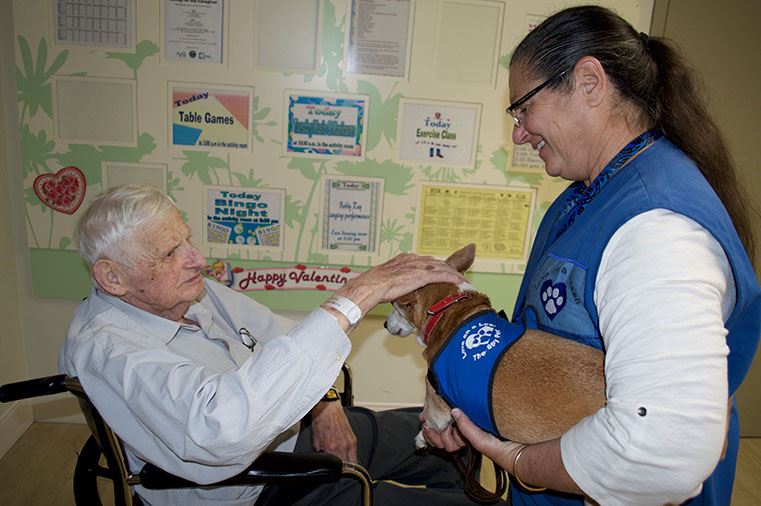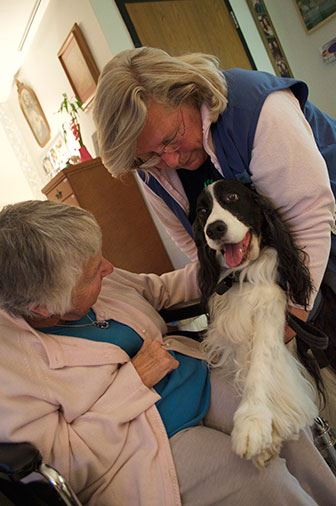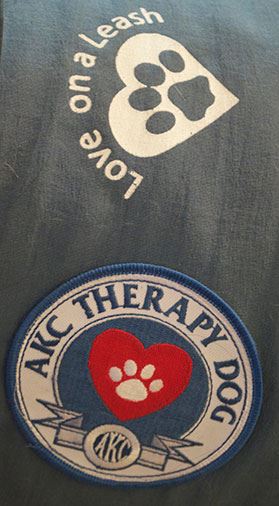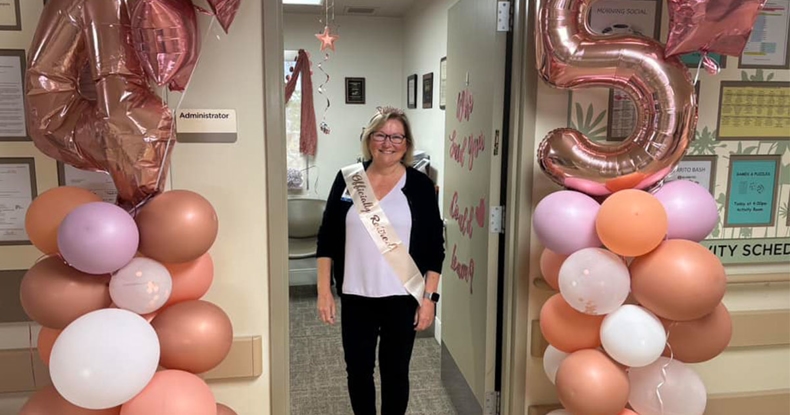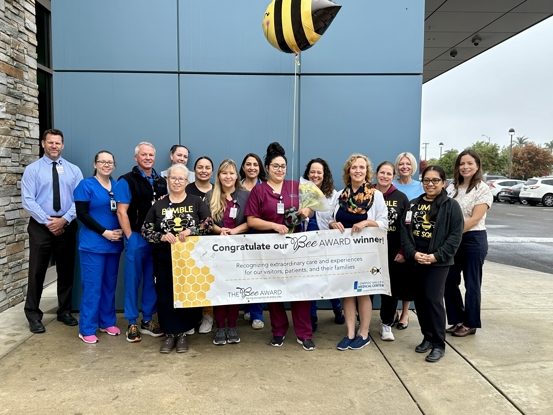Better Healing with Pet Therapy
- Category: LVMC Updates
- Posted On:
- Written By: LVMC

Every month at LVMC’s Comprehensive Care Center, a group of volunteers brings visitors to see patients and residents. But the visitors are not human. This group belongs to “Love on a Leash,” a charitable organization based in San Diego that has more than 2,000 members around the nation.
“Hi, would you like a visit from a dog,” asks retired Lompoc teacher Kathy Asbury, who brings Oliver, a 9-year-old English springer spaniel. “I think I’ve seen you before,” says one resident. “What a beautiful dog.”
As Asbury and the others wander the hall of the skilled nursing and rehabilitation facility, they ask residents whether they want a visit, or want to touch the canine. Oliver has been visiting for six years. “It’s lovely to share our dogs with others,” says Kathy, who is joined by her husband, Wayne. “It’s also good for the residents. They love getting the attention. And the dogs love the attention.” Also visiting one recent day were Jean MacLean and her whippet “Donny” and mix “Tammy.” Carol Linger brought her canine “Charm.”
Each animal that’s part of Love on a Leash goes through rigorous training. The organization recommends that dogs attend a therapy pet class and the animals must be evaluated for temperament and obedience. Love on a Leash requires a “control evaluation” be administered by a certified behaviorist, dog trainer, canine evaluator or obedience instructor.
“Some dogs are really good at this,” Asbury said. “Our last two dogs would never have been able to. It depends on their temperament.” According to Liz Palika of Love on a Leash, the therapy dog movement is based on the human-animal bond or the affection that dogs have for people and that people have for dogs.
A therapy dog can be any size, body shape, breed, a mixture of breeds, color, coat type, or sex. Palika says the assistance may be emotional: by showing the person being visited that he or she is loved and lovable. The person being visited may smile, cry, hug the dog, pet the dog, or laugh while the dog performs tricks. “The help might also be physical: encouraging a stroke victim to move an arm by petting the dog or throwing a ball for the dog,” she says. “Any help the therapy dog provides is based upon the relationship – the bond – people and dogs have shared for thousands of years."
Barbara Zinakorjian has been volunteering with the organization for five years. She brought an almost 13-year-old part-Corgi mix named Mona. Mona was found by Zinakorjian at the Santa Maria Humane Society.
“As much as I love animals – if I couldn’t live someplace with animals – it would mean so much to me to be able to see them and pet them,” she says. “Some people have the dogs sit on their laps. And they thank us. Their faces light up.”
Zinakorjian says that CCC residents tell stories about their own past pets. Patients in the rehabilitation side of the CCC will talk about where their pets are staying while the patient is regaining strength and recovering enough to return home.
“They’ll tell us how much they miss them,” she says. Mona the dog, she adds, has a “great nature.” “She’s quiet, never assertive. We had to go through testing just to make sure, in case someone reached down to grab her.”
The training is critical, she adds, because a dog might be inherently afraid of wheelchairs, or respirators, or may have had a traumatic experience with an older person in the past.
CCC resident Lois Cook is delighted to see Mona one afternoon. She accepts cheek kisses from the dog and pets her. “I think it’s great,” Lois says. “It’s wonderful. We appreciate all they do.”
A therapy pet's primary function is to brighten someone's day. “They put a smile on someone's face, make their day a little brighter, or bring back a cherished memory,” Love on a Leash says.

